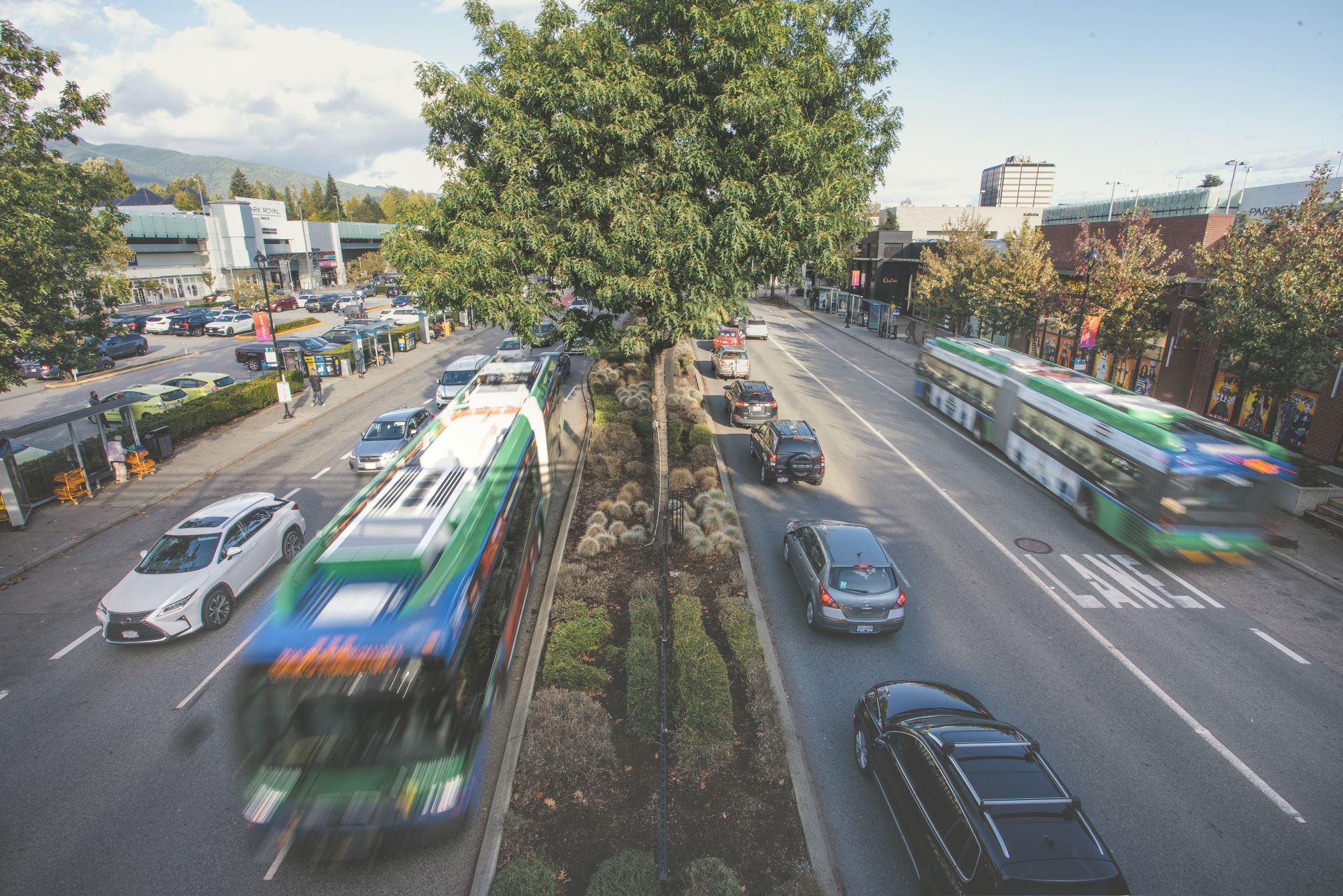TransLink releases Climate Action Plan
TransLink releases Climate Action Plan

TransLink has released a Climate Action Plan outlining what we’ll do over the next three years to address the climate emergency and meet our ambitious climate targets for the transit system.
What’s happening: The Climate Action Plan will accelerate progress towards a carbon neutral region by 2050. Highlights include:
- Developing a Net-Zero Facilities Strategy by 2024 and evaluating new technologies such as heat pumps, renewable fuels, passive design, wood construction and solar
- By 2024, expanding the compressed natural gas bus fleet to 383 and moving to renewable natural gas
- Expanding the battery-electric bus fleet from four to 155 (136 new vehicles) by late 2025
- Designing and constructing the new Marpole Transit Centre by 2027 to serve 350 battery-electric buses.
- By 2030, replacing more than one-third of our diesel fleet with 462 battery-electric buses
- Renovating the Hamilton, Port Coquitlam, and Burnaby transit centres to charge and store battery-electric buses.
- Developing a cooling and tree canopy program at transit passenger facilities by 2023
- Taking steps to protect the transit system from climate impacts, including revising how we design and build transit passenger facilities
- Evolving our climate plan to integrate Scope 1, 2, and 3 emissions and leveraging our supply chain to help achieve regional social and environmental sustainability goals
Why it matters: Over the past two years, extreme weather in the form of deadly heat waves, intense rain, and flooding have had an enormous impact on people who live, work, and play in the region.
In response to this unprecedented extreme weather, the Climate Action Plan prioritizes climate resilience, so we can keep our customers safe and comfortable while keeping the region moving. We’re evaluating climate risks and taking steps to transform our operations, assets, and passenger facilities to become more climate resilient.
It’s critical that we show leadership by working with our partners in government and other stakeholders to respond to the climate emergency.
The context: The Climate Action Plan builds on our Climate Action Strategy, which was first adopted in January 2022. The strategy set a goal for us to become a climate-resilient and net-zero greenhouse gas (GHG) transit system by 2050, with a 45 per cent GHG reduction by 2030 relative to 2010 levels. The plan also supports Transport 2050 and our efforts to decarbonize regional transportation — the largest source of GHGs in the region.
Take action: By choosing transit instead of driving, you’re taking one of the biggest steps to reduce your carbon footprint.
Learn more: Read the Climate Action Plan at translink.ca/climate.






Where does the electricity come from?
Well done. I especially like the idea of planting trees around bus stops . What about doing the same along all major transportation corridors, and retaining mature trees too.
Alex Jamieson,, N . Van
What does renewable natural gas mean? In fact what does “natural” gas mean? Fracking is not an option.
What was your score for GHG reduction in 2022?
How will you keep to your goals?
Why not 100percent reduction?